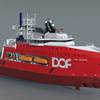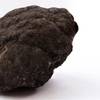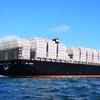Report: The U.S. Marine Market
A ‘work in progress,’ the North American brown water, shallow draft sectors have experienced a tumultuous year of evolution, changing market conditions, a rapidly shifting regulatory environment and new opportunities. Anything but boring; and within the pages of Maritime Reporter’ & Engineering News’ Annual Yearbook, Joseph Keefe, editor of sister-publication MarineNews, takes a deep dive into the issues driving the domestic waterfront.
Workboat Emissions
More than one year ago, Volkswagon learned the ultimate (and painful) meaning of the iconic U.S. adage of “Don’t do the crime if you can’t do the time – or at least pay the staggering fine.” And pay it forward, Volkswagen did. The auto manufacturer got caught using software to trick emissions control software during testing on hundreds of thousands of vehicles in order to get a passing grade, after which the cars operated in violation of the Clean Air Act.
As part of a series of three settlements with the U.S. Environmental Protection Agency (EPA) totaling close to $14.7 billion, Volkswagen was required to fund two mitigation trusts to the tune of $2.925 billion, which is now being used to clean up diesel emissions in the United States. The money is slated for projects with “eligible mitigation actions,” such as upgrading tugboat or ferry engines, to reduce the excess emissions that were produced by the illegal cars. Engines change outs can only be repowered to EPA levels Tier 3 or Tier 4. Other eligible options include the increasingly popular hybrid or all-electric option.
As it happens, the top 10 recipients of trust funds are also the states with the largest marine sectors. The beneficiaries have 10 years to request their funding and implement approved mitigation actions. Applications must include projected NOx reductions and impact on air and community health. Project priority will be based on the emissions reduction or offset per dollar spent, as well as factors such as health benefits and impact on wild areas. Suffice it to say that, when it comes to financing engine upgrades and replacements using other people’s money – this is as good as it will ever get.
Unfortunately, not everyone has gotten on board the clean and green train. It turns out that commercial workboat engines are staying in service more than two times longer than predicted by the U.S. Environmental Protection Agency (EPA), according new research from the Diesel Technology Forum (DTF) and Environmental Defense Fund (EDF). That says a lot for the quality of marine engines, but at the same it isn’t necessarily a good thing. But, the news provides clues to a new path for clean air improvements in large port cities.
The new report, entitled “Impact of Updated Service Life Estimates on Harbor Craft and Switcher Locomotive Emission Forecasts and Cost-Effectiveness,” found the average Category 2 workboat remains in service for 50 years, instead of the 23-year lifespan estimated by the EPA in the 2008 Heavy Duty Locomotive and Marine Rule. A longer service life reduces the fleet’s turnover rate to cleaner, lower-emitting engines, therefore increasing future-year emission estimates.
Commercial marine and locomotive source categories should be a primary focus of future emission reduction efforts for retrofit/repower programs based on cost effectiveness. In other words: this is a great opportunity for operators to get green cheaply, and a terrific way to keep our shipyards humming along.
Offshore Energy Workboats
By autumn of 2018, a glimmer of hope in the offshore energy markets – especially in the Gulf of Mexico – had oil support operators looking to a better tomorrow. It had been a long time since anyone could say that. Multiple bankruptcies dogged offshore service firms as low oil prices dampened the economics of deepwater drilling. The emergence of slimmer, hopefully more profitable offshore companies and some interesting developments on the merger side foretell – if nothing else – excitement in the months to come.
All that said; the hottest news in the last twelve months probably was the merger of Tidewater and GulfMark, eclipsed only perhaps by Harvey Gulf’s (attempted) party crashing at the 11th hour. New Tidewater is the largest OSV owner on the planet by sheer number of OSVs owned, but Edison Chouest Offshore remains in the pole position by fleet value. According to VesselsValue.com, if this downturn has taught us anything, big companies survive.
Fast forward to November, however, and global consulting firm AlixPartners, in a report entitled, “Too many ships, too few rigs: why recovery is still a distant dream for the OSV sector,” warned that companies counting on a quick return to stability in the OSV sector were in for a rude awakening. The September report went on to say that OSV companies continue to face pressure due to a radically changed oil industry and must take quick and decisive action in order to survive in what should be considered the ‘new normal.’
The AlixPartners report insists that the global OSV market is oversupplied by about 1,150 vessels. About 900 vessels are 15 years or older which will have difficulty finding work and could be retired. But there are real factors preventing a reduction in the overall supply of vessels. The sector is fragmented, with the largest operators controlling 30% of the fleet and the remaining 70% controlled by 400 smaller operators with fleets of six or fewer vessels. Small operators have little incentive to retire any of their own fleets and are loathe to take action that would benefit the larger companies or the sector overall.
Moreover, a high proportion of these vessels are out of class and worth less than what it would cost to get them back to operating condition. So why aren’t owners sending them to the scrap yard? This is often to do with age. At the same time, the scrapping option is not as economically attractive for offshore supply vessels as it would be for tankers or bulk carriers. The low steel content of offshore supply vessels leaves them with a scrap value of less than 1 to $2 million, with transport costs also weighing on that difficult decision. And, OSV demand is lower than it was five years ago. Indeed, VesselValue’s Charlie Hockless summed up the situation in late November, “These leaner times have forced drillers to reduce costs, and they have done so with great success. So much so that in some areas, a USD 40/bbl oil price environment has been made profitable. If vessel owners accept scrapping losses now, the rewards/recovery will come sooner.”
Safety: USCG, AWO Weigh in
In late July 2018, the American Waterway Operators (AWO) and the U.S. Coast Guard (USCG) issued their annual benchmarks on safety for the domestic towing industry. It came at a particularly timely moment, just on the heels of the deadline for the so-called ‘subchapter M’ towboat rules. With subchapter M codified as a means to bring (better) safety to more than 5,000 previously uninspected vessels, it will be interesting to see what the future brings in that regard. Arguably, the industry has done a pretty good job of policing itself over time. To that end, the rate of fatalities aboard U.S. towboats continues to trend downwards. For 2016, the towing industry fatality rate is approximately half the transportation sector and double the rate for all fatal work injuries.
On the environmental front, the USCG reported 84,319 gallons of oil were spilled as a result of 49 tank barge pollution incidents in 2017. The largest spill was the result of an explosion and fire aboard a barge at an Aransas Pass anchorage. This incident accounted for 95% of the total oil spilled in 2017, and had it not occurred, the continued downward trend of the collective inland towboat sector would have been obvious. Indeed, and while even one barrel spilled is one too many, three spills accounted for 99% of the total volume of oil spilled from tank barges in 2017. To say that the industry, over the past 20 years, has exponentially cleaned up its environmental signature would not give nearly enough credit to those firms providing service in this sector.
From 2014 through 2017, there has been a 45% reduction in ALL Reportable Marine Casualties reported to the Coast Guard. Over those same years, the towing vessel industry has experienced a 48% reduction in reported incidents, or slightly better than the industry mean. With notable and rare caveats, in terms of safety and environmental performance, the towboat industry continues to get better. The advent of the Subchapter M towboat rules should accelerate that pace. Time will tell.
Read the AWO/USCG report by visting: www.americanwaterways.com/sites/default/files/2017USCG-AWOAnnualSafetyReport31Jul2018.pdf
The Workboat Fleet: Size matters
There are many ways to measure the U.S. workboat fleet and various stakeholders have their own slant on the process. As a general statement, the commercial fleet as a whole is getting older, and this is good news for domestic shipyards who would like to see a bit more sunshine in their bottom lines. They may get their wish. In fact, as much as 41 percent – a whopping 17,596 vessels – of the domestic commercial fleet is now older than 21 years, some of it (13,353; 31%) 25 years or older (or in other words, far older than what the rest of the world deems ready for the breakers). More significantly, 61% of all U.S. flag self-propelled vessels are older than 25 years. Our fleets need to be renewed and they need to be renewed now. Virtually 99% of those vessels can be considered workboats.
Alarmingly, the fleet of large U.S.-flag vessels engaged in international trade has declined from approximately 199 vessels at the end of 1990 to 82 vessels at the end of 2017. In February 2018, the number of U.S.-flag vessels dropped again, to 81 vessels. The heart of the U.S. merchant fleet, therefore, is its workboat, brown water sector. That won’t change any time soon.
Tugboat & Towboat manufacturing
A recent report from Amadee+Company provides a unique, first-time market and competitive analysis of the size, segmentation, competition, trends and outlook in the manufacture and supply of tugboats and towboats in the United States. Products analyzed include harbor/escort, ocean, ATB, inland and multipurpose tugboats and towboats. The report, “tugboat and towboat Manufacturing in the United States from 2017-2023,” provides a detailed look at a segment of one of the oldest industries in the United States: shipbuilding.
According to the report, currently there are approximately 125 shipyards operating in the United States, spread across 26 states, which are classified as active shipbuilders, and capable of building tugboats and towboats. Of these, only 39 manufacturers manufacture tugboats and towboats, and of these, only eight made tugboats exclusively, in the most recent year analyzed. The report identifies Eastern Shipbuilding Group, Diversified Marine and Conrad Shipyard/Conrad Orange as the biggest players in terms of shipment value.
U.S. tugboat and towboat production has ranged between 105 and 122 units annually, worth $600-$900 million. Although small compared to U.S. government shipbuilding, tugboat and towboat production is absolutely necessary for U.S. waterborne transportation, which is estimated at $16.9 billion in 2019, is of strategic importance, and is protected by the Jones Act.
Towboats represented more than two-thirds of the market in terms of volume but less than 40% in terms of value for the last year that was analyzed. That is because the average selling price for a tugboat was more than $13 million, compared to a towboat ASP of almost $4 million. After towboats, harbor/escort tugs are the second largest market segment in both volume and value, followed by ATBs, ocean tugs and multipurpose tugs.
The report identifies C&C Marine as the largest towboat builder in terms of production value, followed by John Bludworth, Eymard Marine, Metal Shark (Alabama), and Progressive Industrial. Together, these five firms accounted for only 36% of towboat production value. This low cumulative share indicates how fragmented the market for towboats is. By comparison, the Harbor/Escort market is dominated by two companies, Diversified Marine and Washburn & Doughty, who together accounted for more than 50% of production, both in terms of units and value.
In terms of volume, tugboats production is forecast to grow almost 3% annually to 2023 and towboats more than 6%. Towboat production will grow faster because 2018 production was far below its historical average. The major demand drivers for tugboats and towboats over the next five years will include black oil and refined petroleum products, petrochemicals and agricultural chemicals.
For example, since 2010, 333 chemical industry projects cumulatively valued at more than $200 billion have been announced, with 53% of the investment completed or under construction and 41% in the planning phase.
Further, 71% of chemical investment from shale gas is bulk petrochemicals and plastic resins. Of that, 52% of total investment (around $105 billion) is petrochemicals and 19% of total investment (around $37.5 billion) is plastic resins. U.S. petrochemical investment has largely focused on agricultural chemicals, methanol, ethylene and ethylene derivatives, especially polyethylene.
Nearly 20 facilities, or crackers, are being built or expanded in the U.S. to convert natural gas liquids (NGL) such as ethane and propane into ethylene. Ethylene is the most used petrochemical globally currently and the main ingredient in polyethylene plastic. Nine of these crackers are expected to come online in the U.S. by 2020, representing 10.7 million metric tons/year of new ethylene capacity. As much as 9.2 million metric tons of that will be online by the end of 2019 in the U.S. Gulf alone.
Many of the natural resources used as inputs for these plants, as well as the petrochemicals and refinery products produced, will be shipped by water for domestic consumption and exports. Without towboats and tugboats these products could not be moved.
A negative for the industry is tariffs. Steel represent approximately 25% of a typical tug’s production costs. The Trump Administration’s imposition of a 25% tariff on imported steel and aluminum in 2018 is expected to drive up production costs by 2%-3% annually. This in turn will have a negative effect on tug producers net operating margins, which typically are less than 5%. Tariffs also will increase the cost of imported products such as deck gear.
USCG Domestic Flag state report
The U.S. Coast Guard’s 2018 Domestic Annual Report contains statistics regarding inspections and enforcement of regulations on U.S. flagged vessels. For the first time, the Coast Guard presented information reflecting the entire U.S. Flag fleet, including barges, cargo vessels, passenger vessels, vessels operating on the Outer Continental Shelf, research and school ships, fishing vessels, and the newest members of the inspected fleet, towing vessels. With the addition of towing vessels, which started getting inspected under 46 CFR Subchapter M in July of 2018, the size of the U.S. inspected fleet grew by approximately 6,500 vessels to a total fleet size of nearly 20,000 vessels, an increase of 50%. Unclear in all of that is why, if the U.S. commercial fleet numbers as many as 42,500 vessels, why ALL of these hulls aren’t being inspected.
In comparison to last year, which was the first year the Coast Guard published their annual report, the number of vessel inspections increased by 1,624 and the average number of deficiencies identified per inspection increased from 1.17 to 1.26, rising nearly 8%. That may have something to do with the introduction of all those previously uninspected subM hulls. Or, not. 2019 will show a clearer trend.
It is important to note that since this report covers the 2018 calendar year and the compliance date for implementation of towing vessels was July 20, 2018, only five months of data for inspected towing vessels is included in this report. Hence, the numbers may actually be far worse on an annualized basis, looking ahead. Interestingly enough, passenger vessels accounted for 72.3% of those deficiencies. However, based on vessel population, Cargo vessels received a higher ratio of deficiencies per vessel, with an average of 4.17. To be fair, the passenger vessel sector is one of the most highly regulated and closely watched – as perhaps it should be, given the millions of lives at stake – in the U.S. flag fleet.














